WBKS 2016 is off to a sickening start. The global Wingsuit Base Killing Season. June through September. Every year. The last two months have been horrific. It doesn’t matter if it’s your first WB jump, or your 1000th. Nobody is kill-proof. The Base Fatality List raced up to #300 and blew right through without even blinking. We lost some newbies, and we lost some of our most current, talented and experienced wingsuiters.
I’m reminded of the 1910’s where fliers (the term pilot hadn’t even been coined yet) were literally town heroes for surviving each and every flight. Without flight schools and instructors, there was nothing to teach or be taught. Without a firm grasp on aerodynamic theory, there were no procedures or techniques to study. Without cockpit instrumentation, there were no safe numbers to fly. Without regulations, there were no rules to follow. In the ultra-niche community of flying machines, it was common practice for multiple fliers to die in the same week, all pushing to be the first to fly a vertical loop without spinning into the ground. Ego, ambition, opportunity and excitement ensured a long line of applicants. The body count continued to rise.
But somewhere along the way, a shift occurred. Experienced pilots started teaching newbies. Flight schools opened. Aerodynamic theory became, well, less of a theory. Training became recognized as a good way to stay alive. Flight instruments were developed that unlocked all the little flight performance secrets that airplanes had been hiding for so many years. And the body count dropped.
FLY FAST, PULL HIGH.
SPOILER ALERT: Pretty much everything I will say in this and future articles can be distilled down to these four simple syllables.
That’s it, end of lesson. Nothing more to be said.
Sounds simple, right? How hard can it be?
Just two little directives.
And yet, WBKS 2016 has already notched up multiple kills from friends NOT flying fast, and NOT pulling high. The same thing happened last season, and the season before that.
“Speed is life.”
“Fly fast.”
“Always carry extra airspeed.”
“Speed is your friend.”
“Never run out of airspeed, altitude, and ideas.”
“Ok folks, thanks for listening. Go out there and have fun, don’t die. End of lesson. Oh, and pull high.”
Seriously, that’s usually where the standard airspeed lesson ends. I’ve heard it myself from wingsuit coaches, sponsored WB pilots, and folks spouting the party line.
Aaaagh… but there’s so much more to discuss!
Well, hang on for the ride. This is part 1 of a 2-part article on Airspeed. Part 1, we’re going to dive down the rabbit hole of Why Fly Fast? In Part 2, we’ll explore both old school and new school styles of airspeed control in our attempts to fly like a falcon.
Part 1: WHY FLY FAST?
Well first, let’s break it down a little more. Fly Fast = FLY + FAST
- FLY = Fly like you mean it
- FLY = You are pilot-in-command, responsible for entire outcome of your flight
- FLY = Nothing happens on your aircraft without you authorizing it
- FLY ≠ Stall your wing unintentionally. Ever.
- FLY ≠ Relax in the suit and let it take you for a ride
- FAST = Faster than best-glide. Much faster.
- FAST = Use those arm muscles
- FAST = Pierce the air, not plow through it.
- FAST ≠ Battle to stay in the air as long as possible
So many WB fatalities are a variation of the same story. Higher skill and experience tends to lead to more spectacular and dynamic arrivals to the scene of the crash, but the core theme is the same.
Exit into slow flight, mush along chest-high, head-high, just above stall speed, trying to hang in the air forever.
“Huh, I’m not going anywhere, I’ll try hugging the air harder for more lift.”
Suit starts to stall, drag increases.
“Whoa, am I going to clear that outcropping?”
Pitch up even more, stall deeper, sink rate builds.
“Oh shit!”
Emergency pitch, line stretch, splat.
It happens over, and over, and over again.
Ugh.
CRAZY THOUGHT OF THE DAY:
I can declare with absolute certainty that nobody has ever died in Wingsuit BASE from flying too slow. You can fly fast, slow, any speed you like. Your speed through the air does NOT kill you. Say whaaaat….?
What kills you is the sudden stop at the end. Folks spout that ‘Speed is Life’, but really, smashing into a wall at 120mph is going to kill you just as dead as stalling into the ground at 60mph. Stay away from the ground. It’s that simple.
So, what are some ways to stay away from the ground in a flying device? We could, perhaps, generate more Lift? Yes, great idea. More lift = more life!
Let me say that again. More lift = more life.
The easiest way to generate slow-speed lift is to grow longer wings. More wingspan = more lift.
Unfortunately, human arms might as well be T-Rex arms in Nature’s encyclopedia of flying devices. Nature never intended us to fly. We’re breaking all the rules. Remember our ‘WTF are we really doing?’ discussion on how ultra-low-efficient our wingsuits are?
Well, if we can’t grow longer wings, what’s the next best way to increase life, I mean, lift?
If you do some digging into the equations governing aerodynamics, it turns out that Airspeed is the next best way to increase available lift. Actually, it’s a really good way to increase Available Lift*.
*AVAILABLE LIFT (AL) is a term I am coining for this discussion. AL is defined as the potential lift available from your wingsuit if you instantly demanded maximum lift at any particular point in your flight. AL is a fluid parameter and fluctuates with each phase of a WB flight: exit, start, flight, flare, and deployment. Flying at sustained max AL is strictly NOT recommended. You will bleed all of your energy, stall your wing, and die. The BFL is smothered with this exact type of fatality. However, flying WITH high AL in reserves is smart. Flying with high AL and never having to use it to save your ass, that’s even smarter.
So, how are AL and airspeed related? Great question.
Have you ever held a 42” pilot chute out the window while driving at 10mph? It’s nothing crazy, easily doable if you’re careful. Now double your speed to 20mph and stick that pilot chute out the window again. You may intuitively expect the drag force to double. Well, we almost broke Dorkzonehero’s arm on the doorframe pillar as the PC was viciously yanked aft. Waaay more than double the force! If you enjoy using healthy arms, please take our word for it.
Why did doubling airspeed disproportionately increase our PC drag force?
As it turns out, airspeed squares aerodynamic force, represented by the relation below, where F = Force and V = Velocity/Airspeed (this is the only formula I’ll put in Part 1, I swear).
F ≈ V2 = VxV
Translation: Force is proportional to velocity squared.
Force can be either Drag or Lift. The square law is the same.
Pick a speed, any speed. Available lift at that speed equals 1x. Now, double that speed, and your new AL is (2)2 = 4x
Increase airspeed 100%, available lift is now 400%.
Double your airspeed, quadruple your AL!
This square law is the hidden magic behind the statement ‘Fly Fast’. Fully understanding this one concept is the single most important step in becoming a safer wingsuit pilot.
Now for the reality check. Not many wingsuit pilots can double their airspeed, so that’s an unrealistic example. Let’s crunch the numbers on some more realistic gains.
Speed Increase: New AL:
Add 10% (110%)2 = 121%
Add 20% (120%)2 = 144%
Add 50% (150%)2 = 225%
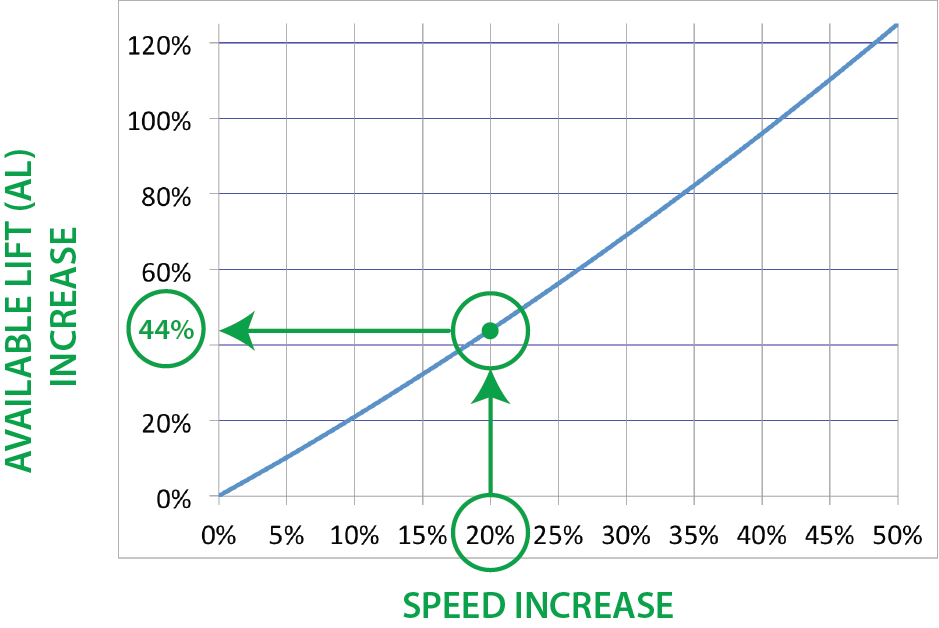
These are all realistic goals you can and must train to.
This weekend at your local dropzone, record how fast you can fly. The technology is out there. Now, in that same suit, set yourself a 10% increase goal. If you can train yourself to tap that extra 10% on demand, you have now given yourself a 21% increase in AL. That is a huuuge gain in the WB environment. Now bump that goal up again. Always be training to fly faster. Screw the flocking dives, I want the mach-ing dives.
Mach, not flock! Mach, not flock! Mach, not…. Ok, you get the idea.
Here’s the beautiful takeaway: For every extra scrap of airspeed you finesse out of your suit, you are rewarded with an increasing return in AL. It’s the best airline miles program on earth! If it sounds like a Ponzi scheme, well, it is. If airspeed was currency, the rich would be getting richer and the poor getting poorer.
Wait, what about that last part? The poor getting poorer?
Here’s the catch: The formula goes both ways. Cut your airspeed in half, and you decrease AL by 4x!
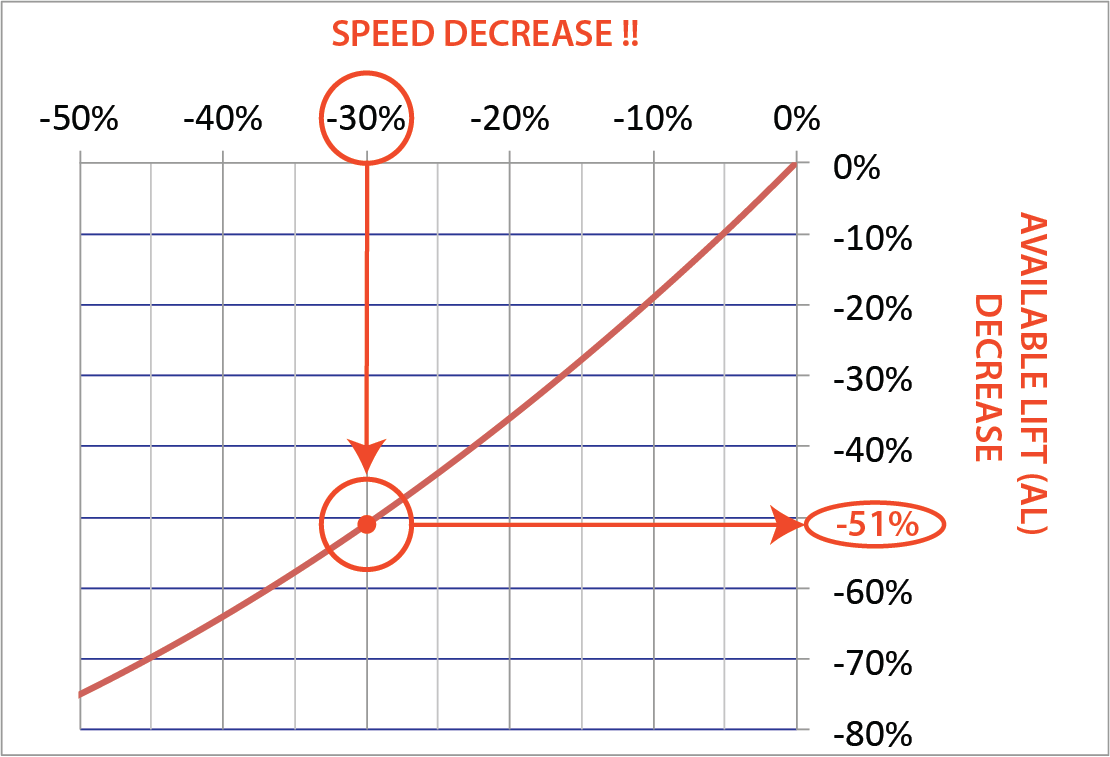
Speed Decrease: Remaining AL: AL Lost:
Slow 10% (90%)2 = 81% 19% less AL
Slow 20% (80%)2 = 64% 36% less AL
Slow 50% (50%)2 = 25% 75% less AL
ANY SPEED DECREASE TAPS THE REALLY SCARY PART OF THIS EQUATION!!
Every wingsuit pilot I know can easily decrease their airspeed by 30% in seconds, without even trying. That’s a 50% decrease in AL! This is precisely why it’s impossible to flare your wingsuit when you’re flying slow. You’ve run out of AL! To make matters worse, any attempt at a slow-speed flare actually increases drag (we’ll get to that in another article), resulting in a higher sink rate and the complete opposite of your intended result. This is the tragically repeated spiral directly responsible for multiple WB fatalities every year. In just the last 2 months, we’ve already seen multiple kills in this exact scenario.
“Cause of Death: Pilot Error – Inability to maintain sufficient airspeed and altitude”
Again, and again, and again… ugh!
So, in the future, any time you feel your wingsuit slowing down, you better have a damn good reason why you’re allowing yourself to bleed precious energy. The only way to get that energy back is to lower your angle of attack, cash in some altitude, and build that airspeed back up. Nothing comes for free in aerodynamics, especially when you’re flying an anvil-glider.
WHY FLY SLOW AT ALL?
You may be asking, “Whoa! If slow flight is so dangerous, why don’t wingsuit pilots just fly fast all the time?”
Good question. Here’s my stab at an answer.
Reason #1: Skydiving Muscle Memory
Watch any new kid zip into a wingsuit for a First Flight Course, and it’s quite likely to hear the wingsuit coach say something like, “Just jump out, relax and have fun. Don’t fight the suit.” This perfectly sets the stage for belly skydiving muscle memory to kick in. Head high, chest high, knees bent, hips arched, ‘arms back’ (I hate that term). It requires the least amount of muscle input. This terrible muscle memory is further reinforced by flocking, whereby everybody distorts and detunes their wingsuit in the pursuit of formation flying nowhere slow. Flocking is absolutely the worst training ever for WB. It’s the wingsuit equivalent of snowplowing down a big-mountain line. Snowplowing isn’t really skiing. Well, flocking isn’t really flying, regardless of how it feels. Get out of that habit fast!
Reason #2: Flying fast is a difficult and learned skill.
Flying fast requires a deliberate and focused training regimen, with significant amounts of actual flight time in speed drill body position. The fastest way to get flight time is to skydive. A lot. If you don’t train, how can you expect to excel?
Now keep in mind, flying fast is a personal parameter. It has nothing to do with your peers or model of suit. It has everything to do with “How much faster can I get this particular suit to fly?” That’s what really counts. If your peers happen to be the same weight and are flying the same suit as you, ok sure, now you’ve got a reference for a pretty fair race. Smoking everybody in your prototype VC-8RX+ does not necessarily mean you are a fast wingsuit pilot. You just happen to be flying a fast suit. Try to fly it even faster.
Reason #3: Muscle Fatigue
All that extra life-giving lift force needs to be held in place by your arm and shoulder muscles. Double your airspeed; quadruple AL; quadruple the muscle force required to use that lift. Ouch. Most humans, with their low strength-to-weight ratios, find it difficult to maintain unnatural loaded arm positions for over a minute. It’s simply easier to relax and let your arms take a break, at the cost of spilling air and lift. If this is happening to you, please regard your arm fatigue as both a flight risk and a required area of improvement. Muscle fatigue at the end of an arm-burning flight also leads to weak pilot chute deployments. Weak PC deployments are responsible for fatalities on the BFL. Get the picture? Hit the gym, if needed. Myself included. No excuses.
So, why fly fast, again?
Airspeed squares Available Lift. Always fly with high AL in reserves. Hold on to it by using good judgment on your line. Spend it judiciously and wisely. AL is very hard to get back. Oh… and pull high.
Stay tuned for Part 2 of this article, where we’ll discuss some old-school airspeed techniques and associated pitfalls, as well as current thoughts and techniques for flying at the speed of heat.

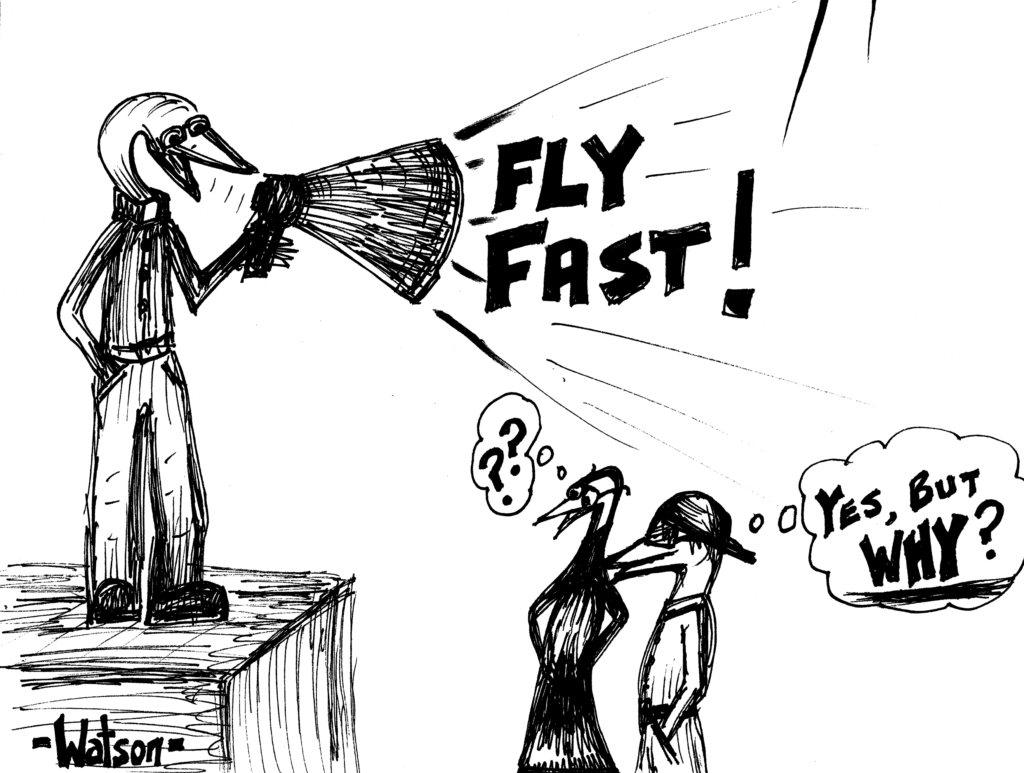
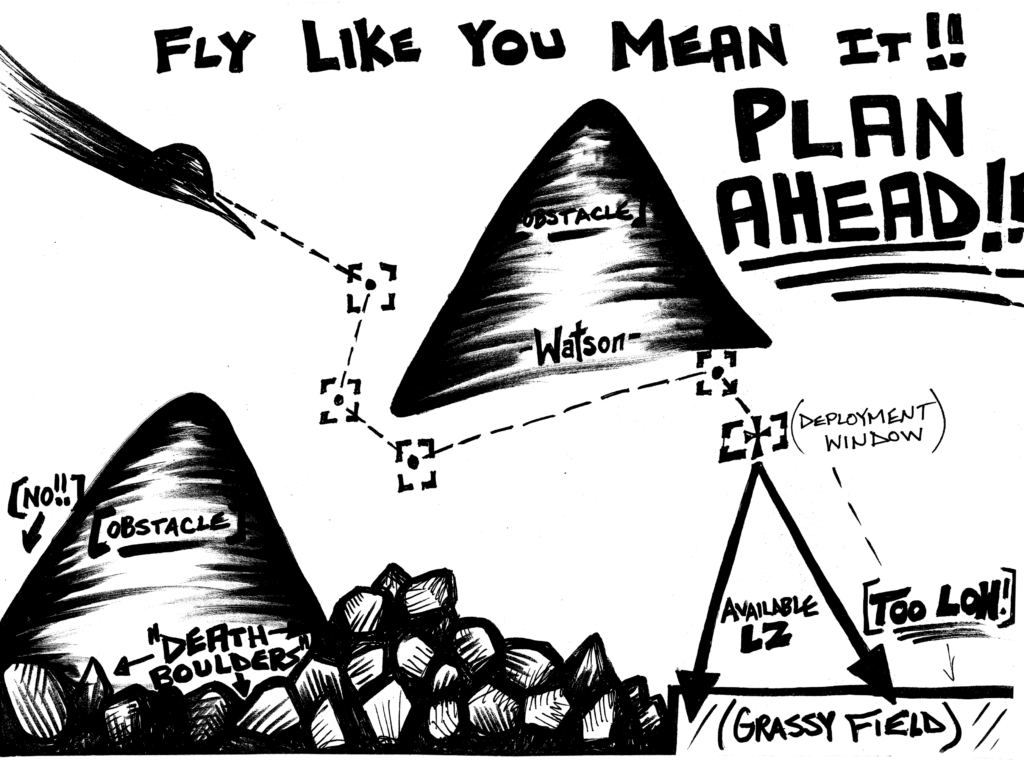
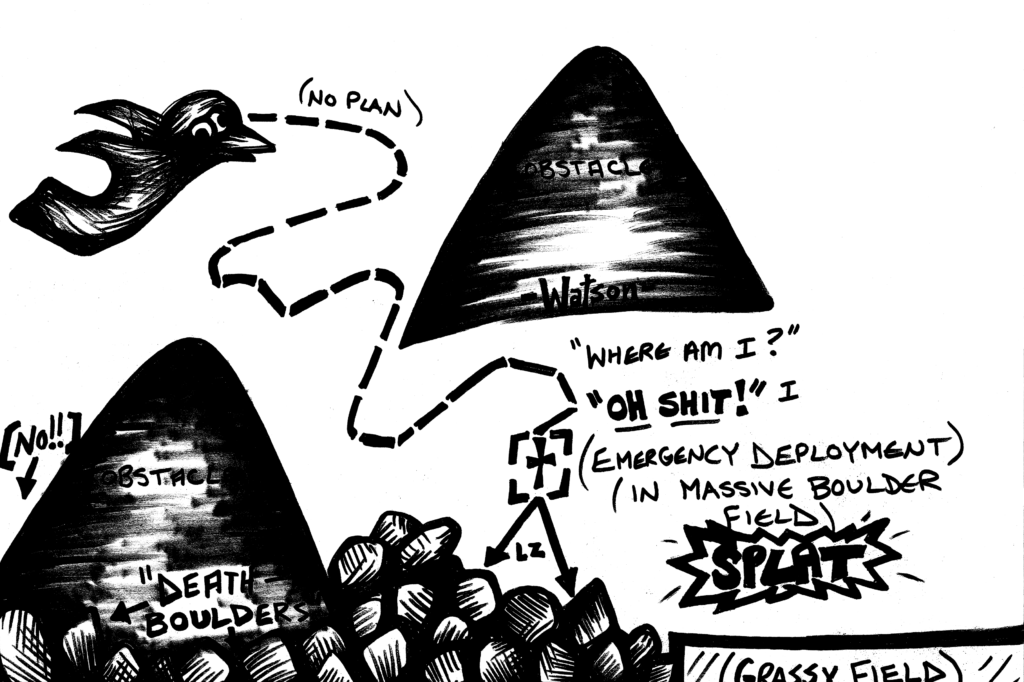

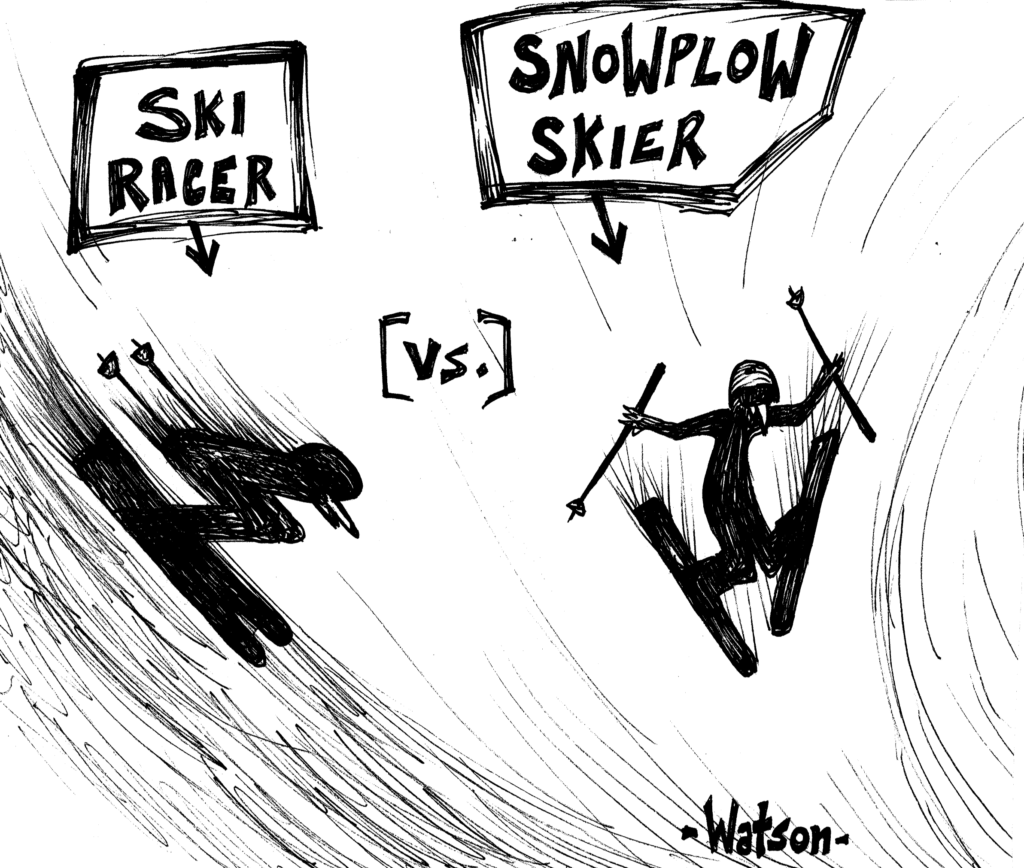
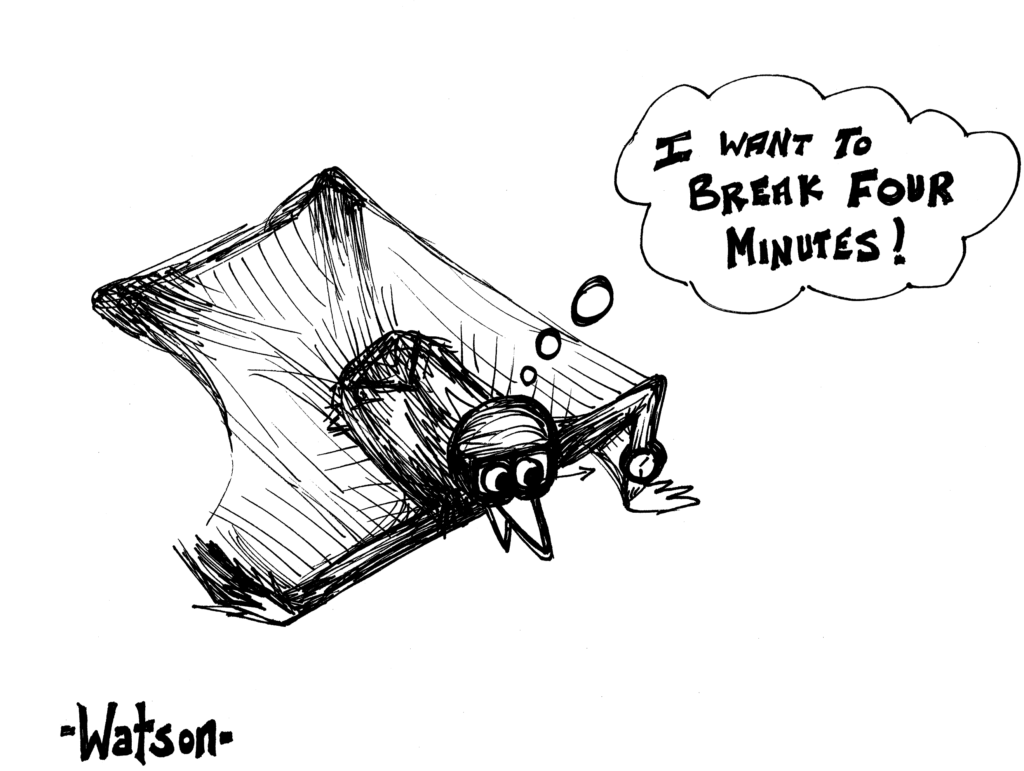
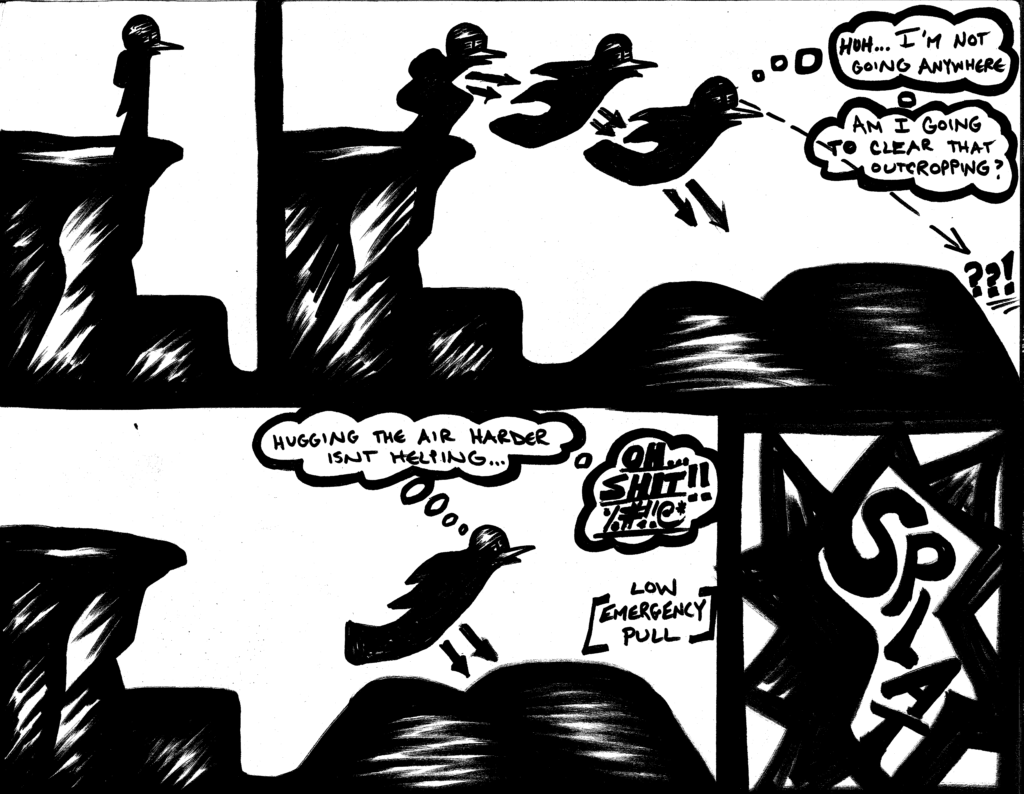
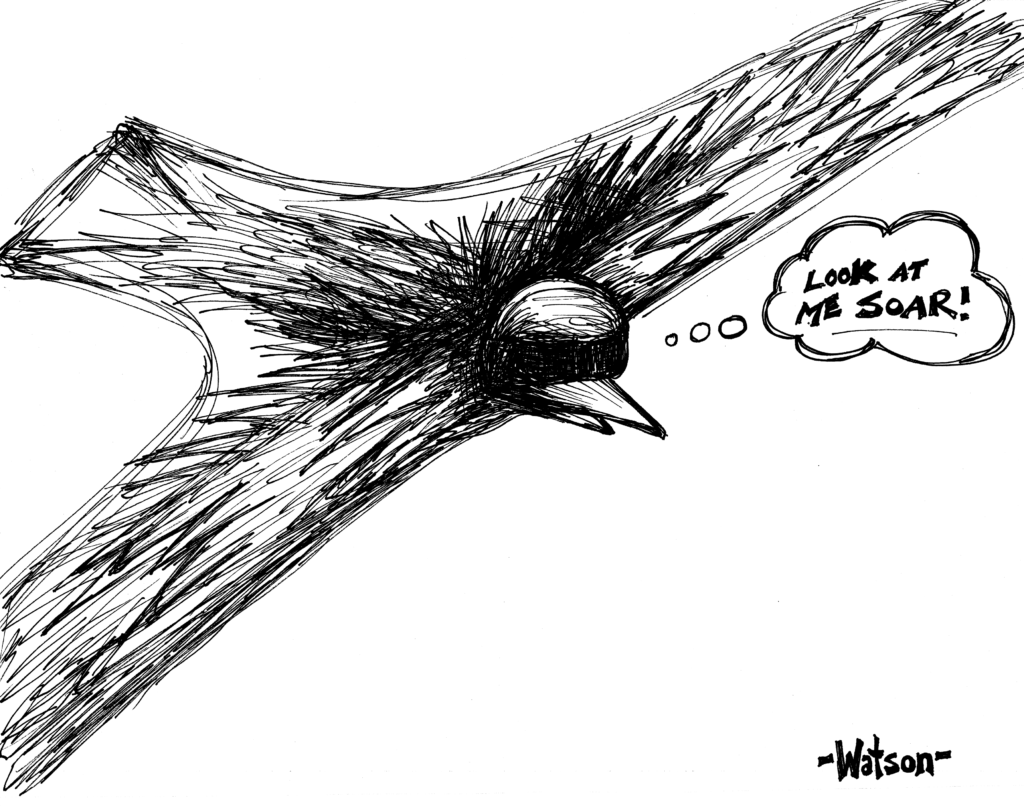
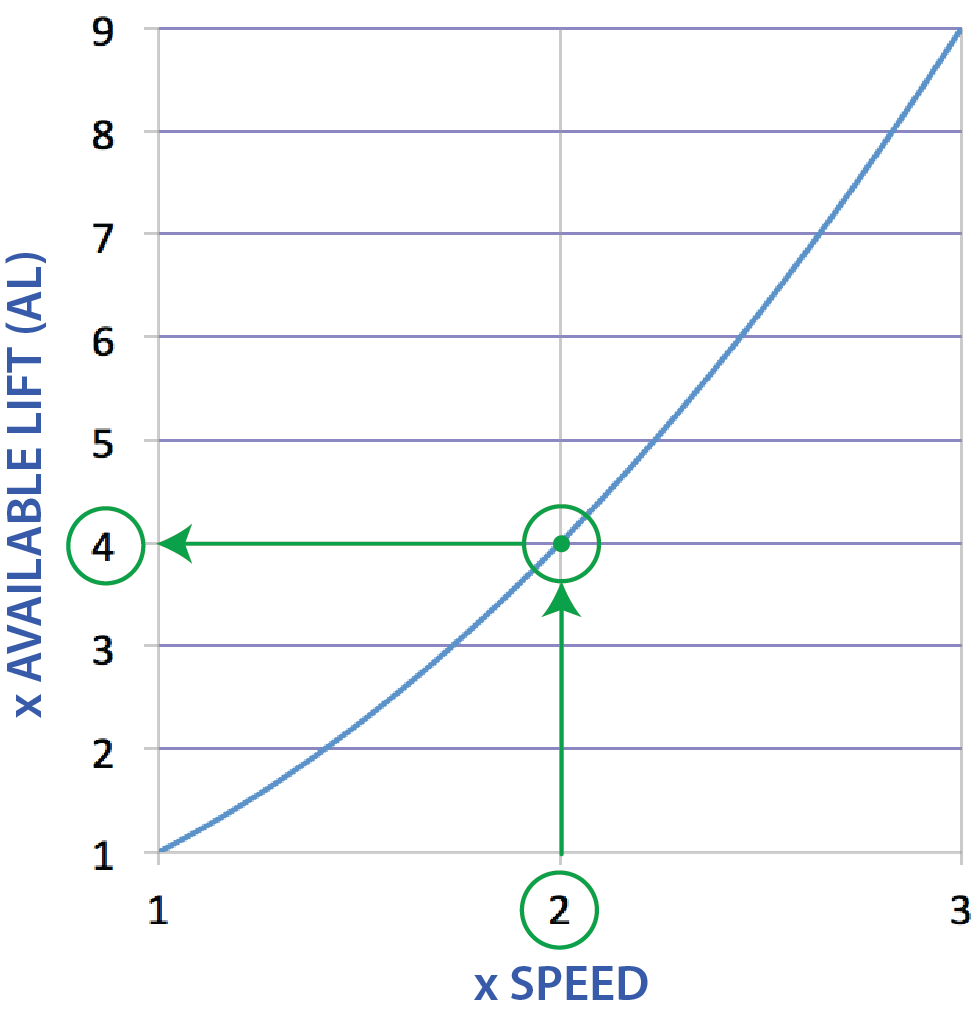
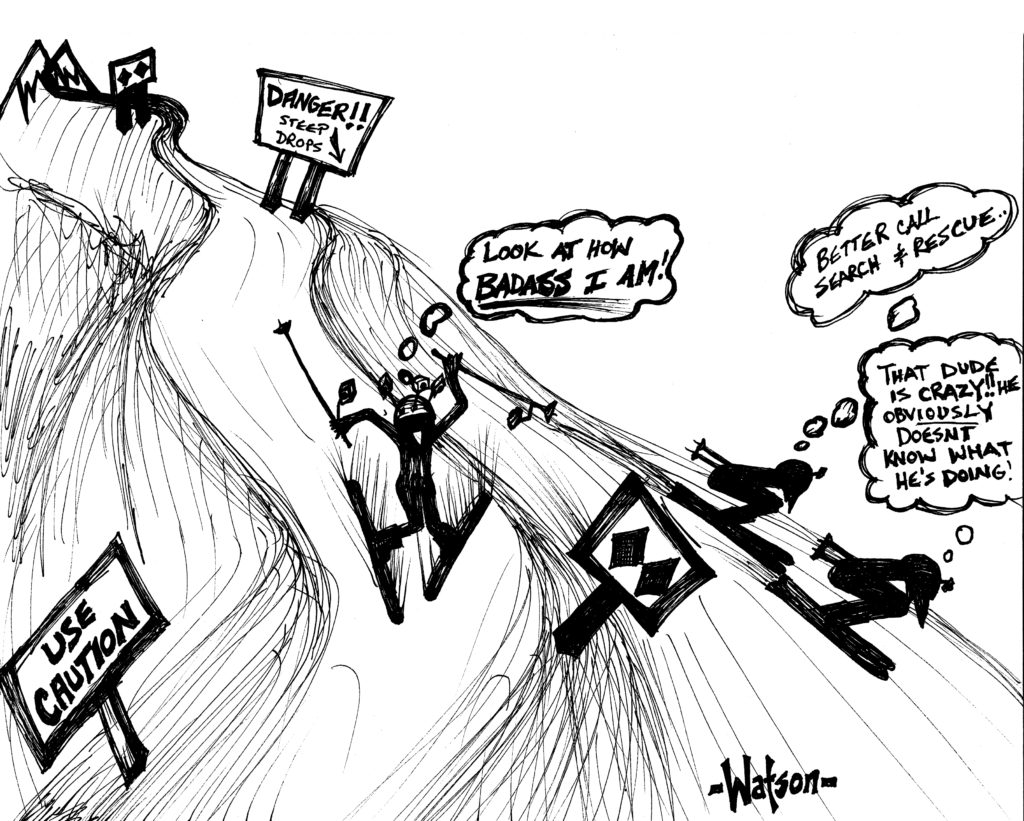
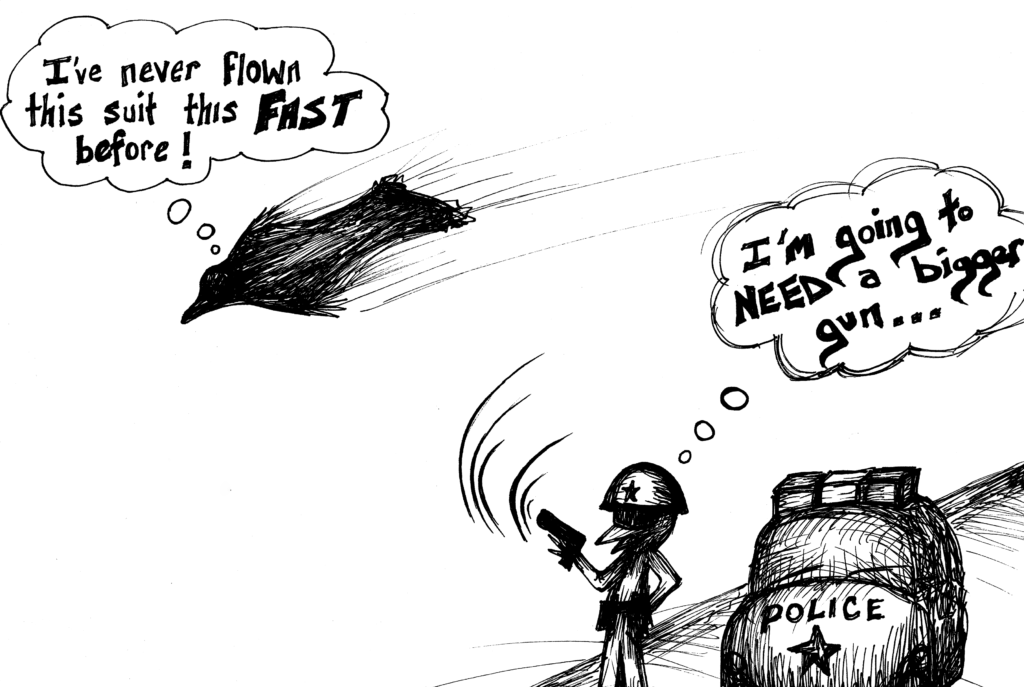
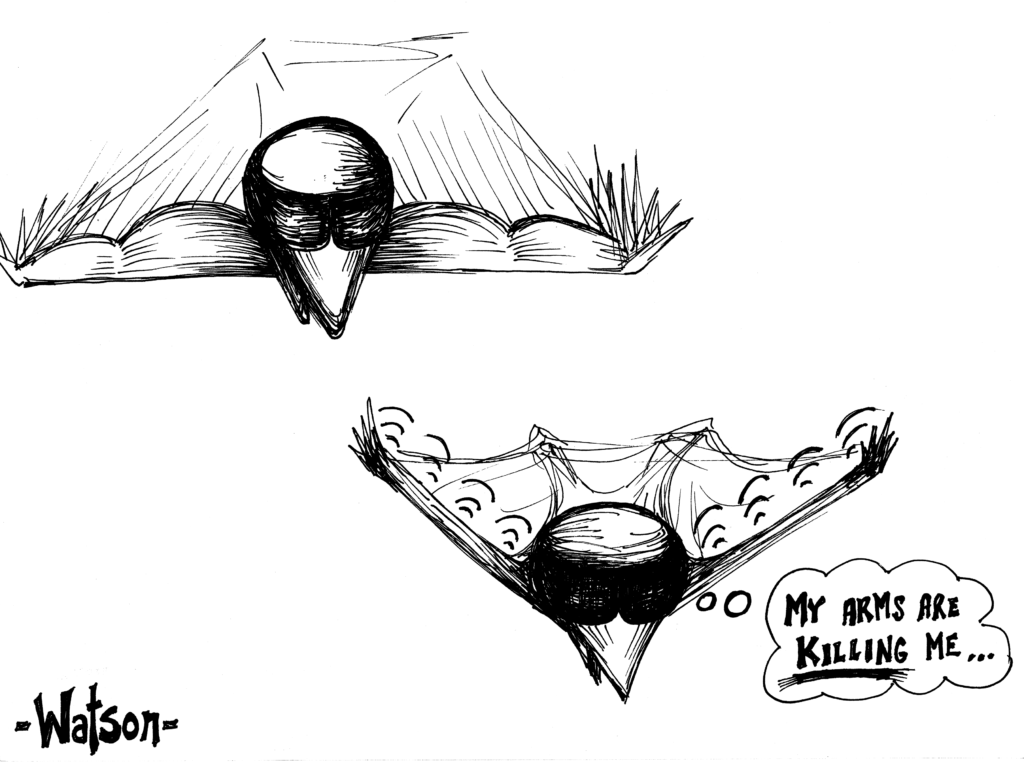
Thanks once again Richard!! Looking forward to each new installment you put out!!
Excellent Richard! And I love the illustrations too 🙂
I want to give you a big kiss for this! thank you for your time and energy to try to educate!! great illustrator too! 🙂
What particular muscles are you trying to build? Or is it just a stamina thing?
On your next arm-burning skydive, pay attention to which muscle groups fatigue first… especially when you’re trying to maintain a solid performance body/wing position for over a minute. For me, triceps, shoulders and forearms are where I feel it. Resistance bands works great for isolating required areas of strength training. You can easily simulate wingsuit loading on your arms with a little creativity. I wrap the band around a floor anchor behind me, and stand in ‘wingsuit flight’ position with the band at approx 45 degree angle from wrist to anchor. Vary position until you feel your ‘wingsuit muscles’ under static load. Hold in required position for 2 minutes to simulate a skydive. Do 4-5 ‘flights’ a day anywhere, anytime. As strength builds, work up to stiffer bands to increase resistance.
Fly stronger in less than a month.
Online exercise packs with multiple resistances start around $30.
I use these:
https://www.amazon.com/Black-Mountain-Products-Resistance-Exercise/dp/7245456313/ref=sr_1_1?s=sporting-goods&ie=UTF8&qid=1472000809&sr=1-1&keywords=resistance+tubing
Thank you thank you thank you. Life saving information. Share it scream it.
Richard very good article! I’m beginner and this information is very precious to me. Thanks 🙂
Thank you,Thank you!!
Awesome man!!! great to see someone doing the research and spending the time educating the comunity!!!
Thank you!!
So true.
Great article !
Aren’t you the same guy who wrote the Moab wingsuit guidlines ? How is it possible to fly fast and pull high in
Moab ?
Same guy.
And yes…Moab and high pulls don’t happen on every jump. But it’s amazing to see how focused training has significantly improved our margins out here.
TGB
Supremo website ! For me sometimes on very long line , crack for example , you will be looking so far ahead at the line that this will bring up your head and chest unconsciously = slowing you down . Recognize this and use peripherals instead
Great article… Thanks
My favorite website/blog ever. So much content, character, and fantastic explanations. Thanks for sharing Richard!
Thank you for all of your hard work in putting this together for the community !
I find your posts amazingly instructive and though my casual approach is very different than your proffesional one, i must recognize that wsb absolutely needs your approach. Now it is not advisable. It has became necessary. Could you maybe go a bit into depth on body positions to achieve certain performances? I mean dearch, rolling arm to change wing form, head position, aim, sight direction, leg position, exit positions, etc. I ask around and there are many different oppinions. There is apparently a big lack of aerodinamic information in ws flying.
Please be patient. It’s all coming. Just can’t do it all at once.
Great article and great website. Keep up the good work!
Amazing article(s), and general advising!